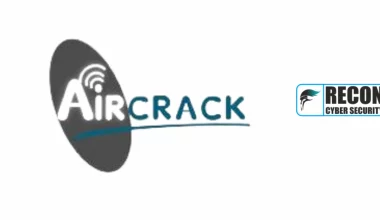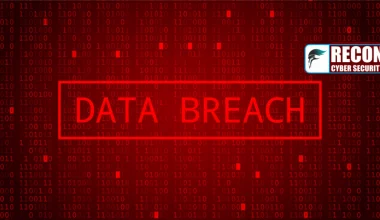Some decades ago, an organization’s most valued assets were either the buildings or shares of stock that they owned. Today, data is the new gold. Consequently, the most precious asset of modern corporations is information—confidential customer information, sensitive organizational secrets, research findings, and pre-release business strategies—a treasure trove waiting to be compromised. Corporate leaders need to understand just how important it is to create a healthy culture of cyber security in their organization; employees need to understand the importance of good cybersecurity practices and their responsibility for protecting both themselves and their employer against hackers who are always looking for vulnerabilities (even when those vulnerabilities seem unlikely). All too often, someone connects their corporate mobile phone to a public Wi-Fi connection without thinking about the consequences; within minutes a hacker can steal all sorts of data from unguarded devices as if he had found pure gold sitting in plain sight at a local diner.
Consequently, a hacker only needs minutes to pilfer all types of data from unprotected devices without anyone noticing – much like finding gold at the local diner.
1. Create a plan for dealing with cybersecurity incidents
You cannot do anything in business without a plan. When it comes to cybersecurity, you will be hacked and overwhelmed because you need to repay the damage that your customers suffered. The first step in creating a cybersecurity culture is defining some basic metrics. It does not matter if you have a company with five or 500 people as employees, so long as everyone’s clued up on the metrics they can get measured. Once something gets measured, it can be improved upon. Think of your current behavior as a baseline, and try to improve it each week. You may also want to create a Cyber Incident Response Plan which details what steps those important stakeholders within your company take when an incident occurs– this way, there’s less chance of things going awry and putting your business at risk due to cybercrime.
You need to be prepared for a ransomware attack. This type of cyberattack is more complicated than other types and will cost you money, time, and reputation. It’s important to prepare now so it doesn’t become a problem later. Put together a plan like this free Ransomware Prevention Checklist that you can follow before something happens then give your IT & Security team copies of the Ransomware Response Workflow Guide so they know what to do when an attack occurs. These guides are very helpful when responding to these types of attacks because they offer information on how employees should handle these situations while protecting themselves from the consequences such as lost money or strained relationships.
2. Let every member of your team take responsibility
Employees usually resist change when the status quo is too far off-kilter. Changes in cybersecurity, though, are inevitable as it’s a rapidly evolving field; this is why you must clearly define their motivations and provide them with resources to help mitigate those fears. Investing in quality cybersecurity training for trainers who can make the complicated yet dry subject of cyber interesting should be at the top of your priorities list. Training employees on how to spot real versus phishing emails, identifying who threats may come from within your organization, and allocating dedicated time for security breaches will go a long way towards boosting morale – especially if there are some incentives involved! Conducting corporate exercises that allow executives to foresee what might happen during a breach while also getting hands-on experience handling such a crisis can prove invaluable in building healthy organizational practices around cybersecurity.
Seeing that the average cost of a data breach is close to nine million dollars, it’s worth investing in such initiatives for securing IT infrastructure and equipping staff to handle cyber attacks.
3. Learning should be made fun and enjoyable
Company training sessions are often perceived as completely and utterly dull. A person will come, read from a PowerPoint presentation—show a few Venn diagrams, and/or teach how to use the latest edition of some software program. But that isn’t the best approach if you’re dead serious about security. It’s important to visually display just how vulnerable all of your employees could be if there was ever a breach. For instance, if nobody understands why they should use a VPN when surfing online—you can invite an ethical hacker to launch what’s known as a man-in-the-middle attack right in front of them all! You can ask for volunteers or offer up yourself first – install a new router and take off the password so someone else connects without using it. The hacker would then live stream how they log into the volunteer’s phone and check their email accounts, passwords, texts—whatever else needed checking out. Of course, you’ll need consent from that individual beforehand!
When your employees witness firsthand how easily a device could be compromised, they will understand the importance of using an encrypted network. In addition to purchasing company-wide VPNs during the training session, you can also request that they purchase them for home use as well. By doing this, you are showing employees that you are committed to their safety and security.
4. Train diligently
Hackers change with every passing day – so should we. Every new feature, like NordVPN’s Threat Protection, has something to offer us if we take the time to sit down and discuss them. With NordVPN, they block cookies, remove ads (aka spam), and scan executable files for malware. Even better? They have a VPN Kill Switch! As an online auction house dealing with vast sums of our clients’ money, we dedicate a lot of our time to training staff on the importance of cyber security. Last but not least? Cybersecurity Training shouldn’t just focus on features or technology-related topics; it also needs to cover incident planning and response training too! You could even host workshops where your employees come up with convincing phishing emails and see who falls prey! This creative thinking will lead you toward success.
According to Benjamin Franklin, They will forget if you tell them what to do. Teach them and they might remember. Involve them and that’s when everyone learns. This method has proven effective for me on many occasions in the past when I’ve used it; particularly involving children who are learning about technology. I’m sure it would work for you too!







